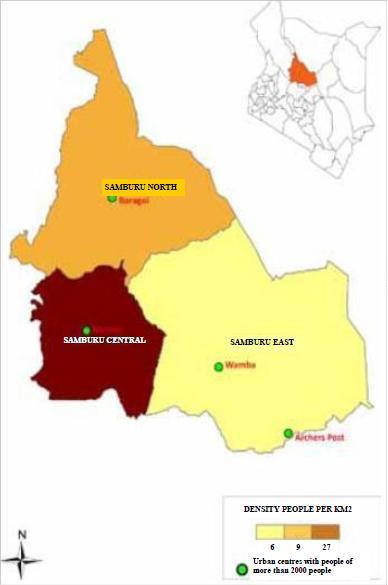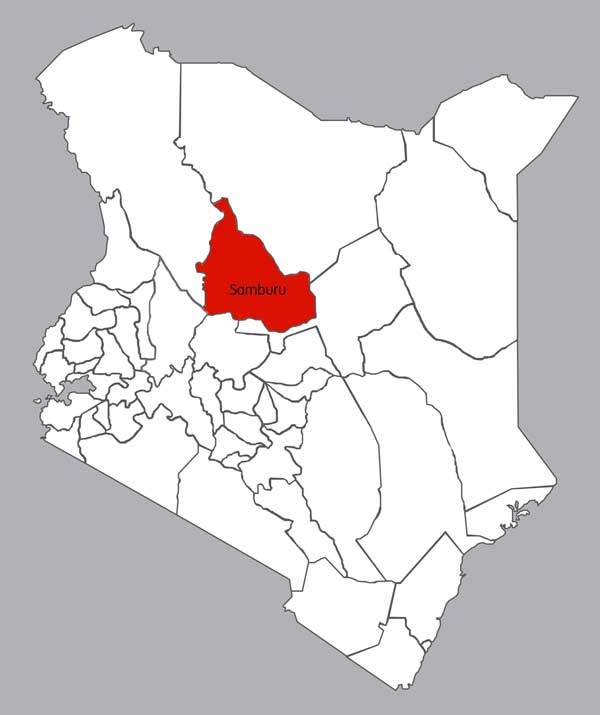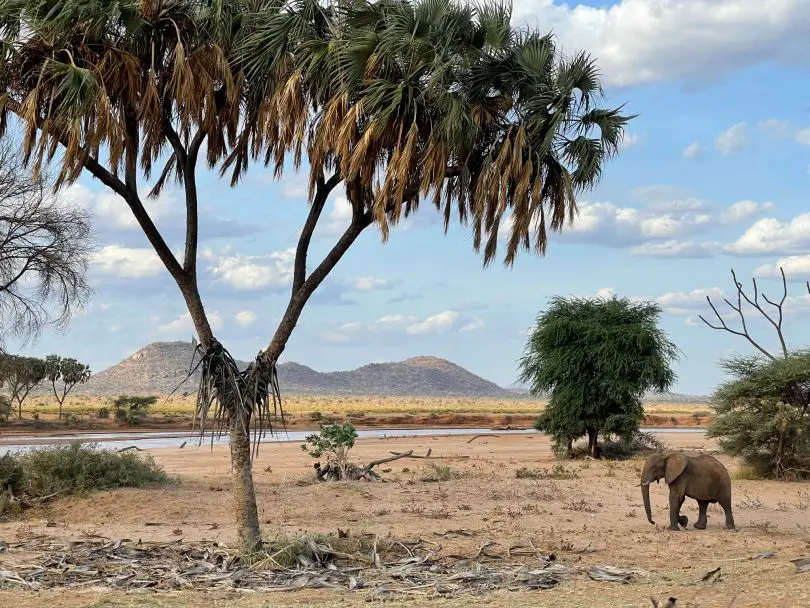Imagine a land where rugged landscapes meet vibrant cultures, where wildlife roams freely amidst breathtaking scenery, and where the charm of authentic African traditions fills the air. Welcome to Samburu County, a hidden gem nestled in the heart of Kenya. With its iconic wildlife reserves, rich heritage, and warm hospitality, Samburu County offers a truly unforgettable experience for those seeking an off-the-beaten-path adventure. From close encounters with elephants and lions to immersing yourself in the vibrant customs of the local Samburu people, prepare to embark on a journey that will leave you in awe of the wonders of this remarkable destination.

This image is property of opencounty.org.
Geography
Location
Samburu County is located in the northern part of Kenya, bordering Marsabit County to the north, Isiolo County to the east, Laikipia County to the south, and Baringo County to the west. It is situated within the Rift Valley region and covers an area of approximately 20,182 square kilometers.
Physical Features
The landscape of Samburu County is characterized by vast plains, hilly areas, and rugged terrain. The majestic Mount Ololokwe dominates the county’s skyline, providing a stunning backdrop to the area. The Ewaso Ng’iro River flows through the county, providing a vital water source for both humans and wildlife. Samburu County is known for its unique ecosystem, which includes the Samburu National Reserve and other wildlife conservancies.
History
Origin of the Name
The name “Samburu” is derived from the Maa language, spoken by the Samburu people who are the predominant inhabitants of the county. “Samburu” translates to “butterflies” in English, symbolizing the vibrant and free-spirited nature of the people.
Early Settlements
Samburu County has a rich history of human settlements dating back thousands of years. The region has been home to various ethnic groups, including the Samburu, Turkana, Borana, and Rendille communities. These communities were traditionally pastoralist, depending on animal husbandry for their livelihoods.
Colonial Era
During the colonial era, Samburu County, like much of Kenya, was under British rule. The British colonial administration established reserves for the Samburu people, disrupting their traditional way of life. This period brought significant changes in land ownership and social structures, impacting the indigenous communities.
Independence and Post-Independence
After Kenya gained independence from colonial rule in 1963, the Samburu people, along with other Kenyan communities, began to reclaim their cultural heritage. The county has since experienced both challenges and progress in its journey towards development and self-determination.

This image is property of elimufeynman.s3.amazonaws.com.
Demographics
Population
According to recent estimates, Samburu County has a population of approximately 310,000 people. The population is largely rural, with the majority residing in small villages and settlements scattered across the county.
Ethnic Groups
The Samburu community is the dominant ethnic group in the county, accounting for a significant portion of the population. Other ethnic groups such as the Turkana, Borana, and Rendille also reside in the county, contributing to the cultural diversity of the region.
Languages
The primary languages spoken in Samburu County are Samburu, Turkana, Borana, and Rendille. Samburu, a dialect of the Maa language, is the most widely spoken language and serves as the lingua franca among different communities.
Economy
Main Economic Activities
Samburu County’s economy is largely based on agriculture and livestock farming. The county has fertile land and favorable climatic conditions that support the cultivation of crops such as maize, beans, and sorghum. Additionally, livestock farming, including the rearing of cattle, goats, and sheep, plays a crucial role in the county’s economy.
Tourism
Tourism is a growing industry in Samburu County, attracting visitors from around the world. The Samburu National Reserve, known for its diverse wildlife including elephants, lions, and giraffes, is a popular destination for wildlife enthusiasts. The county is also home to the Namunyak Wildlife Conservancy and the Women’s Beading Cooperative, which offer unique cultural experiences for tourists.
Agriculture
Agriculture is a significant economic activity in Samburu County. The fertile soil and favorable climate allow for the cultivation of various crops, providing a source of income and food security for the local communities. The county government has implemented initiatives to promote modern farming techniques and improve agricultural productivity.
Livestock Farming
Livestock farming is an integral part of Samburu County’s economy. The Samburu community, in particular, has a strong cultural attachment to their livestock, and livestock rearing provides both food and income for the community. The county government has implemented programs to improve livestock productivity and enhance market access for livestock products.
Mining
Samburu County is rich in natural resources, including mineral deposits such as limestone and iron ore. Mining activities provide employment opportunities and contribute to the county’s economic growth. However, there is a need for sustainable and responsible mining practices to minimize the environmental impact on the region.

This image is property of reliefweb.int.
Culture
Traditional Attire
The Samburu people have a distinct traditional attire that reflects their cultural heritage. Both men and women wear brightly colored clothes adorned with intricate beadwork. The ornaments and accessories, such as necklaces, bracelets, and earrings, are handcrafted by the Samburu women, showcasing their exceptional skill in beadwork.
Music and Dance
Music and dance play a vital role in Samburu culture, serving as a form of expression and storytelling. Traditional instruments, such as the lyre and the drum, accompany the rhythmic dances performed during ceremonies and cultural gatherings. The Samburu people are known for their energetic and vibrant dances, which often involve jumping and footwork.
Cuisine
The Samburu cuisine is a reflection of their pastoralist lifestyle. Milk and meat form the staple foods in their diet, with dishes such as nyama choma (grilled meat) and mursik (fermented milk) being popular. The Samburu also gather wild fruits and vegetables from the surrounding landscape, incorporating them into their meals.
Festivals and Ceremonies
The Samburu people celebrate various festivals and ceremonies that hold deep cultural significance. The Eunoto ceremony marks the transition from warriorhood to adulthood for young men, while the Labalaba festival is a time of thanksgiving and blessings for a bountiful harvest. These events showcase traditional rituals, dances, and performances, allowing visitors to immerse themselves in the rich Samburu culture.
Tourist Attractions
Samburu National Reserve
Samburu National Reserve is a renowned wildlife destination, offering visitors the chance to spot rare and unique wildlife species. The reserve is home to the Samburu Special Five – the Grevy’s zebra, reticulated giraffe, Somali ostrich, Beisa oryx, and gerenuk. Visitors can go on game drives, guided walks, and cultural tours to experience the beauty of the reserve.
Mount Ololokwe
Mount Ololokwe is an iconic landmark in Samburu County, attracting hiking enthusiasts and nature lovers. The mountain offers breathtaking panoramic views of the surrounding landscape and provides a challenging yet rewarding experience for climbers. The rich flora and fauna found on the mountain make it a haven for biodiversity.
Namunyak Wildlife Conservancy
Namunyak Wildlife Conservancy is a community-led initiative that promotes wildlife conservation and community development. The conservancy is home to a variety of wildlife, including elephants, antelopes, and leopards. Visitors can enjoy game drives, bush walks, and cultural experiences while supporting the local communities.
Women’s Beading Cooperative
The Women’s Beading Cooperative in Samburu County serves as a hub for traditional beadwork and handicrafts. Visitors can witness the intricate process of beadwork and purchase handmade jewelry and crafts created by the talented Samburu women. The cooperative provides economic empowerment for the women and preserves the cultural heritage of beadwork.
Samburu Cultural Village
The Samburu Cultural Village offers visitors an immersive experience into the Samburu way of life. Visitors can interact with the Samburu community, learn about their traditions and customs, and participate in cultural activities such as traditional food preparation, beadwork, and music and dance performances. The cultural village provides a deeper understanding of Samburu culture and promotes cultural exchange.

This image is property of elimufeynman.s3.amazonaws.com.
Infrastructure
Roads
Samburu County has made significant progress in improving its road infrastructure. Major roads connect the county to neighboring regions, facilitating transportation and trade. Efforts are ongoing to upgrade and maintain roads in rural areas, enhancing accessibility and connectivity for local communities.
Healthcare
The county government has invested in improving healthcare services in Samburu County. Health facilities and clinics have been established in various parts of the county, providing primary healthcare services to the population. However, challenges such as access to specialized care and medical personnel remain, and efforts are being made to address these gaps.
Education
Samburu County recognizes the importance of education in driving development and empowering its citizens. The county government has invested in building schools, providing educational resources, and training teachers. Efforts are being made to improve access to quality education for all, including initiatives to reduce gender disparities in education.
Governance
County Government
Samburu County has a devolved system of governance, with a county government headed by a governor. The county government is responsible for the provision of various services, including healthcare, education, infrastructure development, and socioeconomic empowerment. The government works in collaboration with local communities, stakeholders, and development partners to address the needs and aspirations of the county’s residents.
Leadership and Administration
The leadership in Samburu County is committed to fostering development and ensuring the well-being of its residents. The county government implements policies and initiatives aimed at improving livelihoods, promoting social welfare, and creating an enabling environment for economic growth. The administration works closely with community leaders and organizations to drive sustainable development and empower the local population.

This image is property of seeafricatoday.com.
Challenges and Future Prospects
Lack of Infrastructure Development
Samburu County faces challenges in infrastructure development, particularly in rural areas. Limited access to quality roads, electricity, and water hinders socioeconomic progress and impedes the delivery of essential services. However, the county government, in collaboration with development partners, continues to prioritize infrastructure development to improve the living standards of its residents.
Drought and Food Insecurity
The county’s arid and semi-arid climate exposes it to erratic rainfall patterns and recurrent droughts, leading to food insecurity and water scarcity. Sustainable water management and irrigation projects, along with drought-resistant farming techniques, are being implemented to mitigate the impact of droughts and ensure food security for the population.
Education and Healthcare Challenges
Samburu County faces challenges in the education and healthcare sectors. Limited access to quality education and healthcare facilities, especially in rural areas, negatively impacts the well-being and development of the population. The county government is working to address these challenges by investing in infrastructure, training healthcare professionals, and implementing initiatives to improve educational outcomes.
Community Empowerment Initiatives
Samburu County recognizes the importance of community empowerment in driving sustainable development. Initiatives focused on women’s empowerment, youth mentorship, and entrepreneurship are being implemented to foster economic growth and social inclusion. These initiatives aim to uplift marginalized groups, create employment opportunities, and promote self-reliance within the local communities.
Conclusion
Samburu County is a region of diverse landscapes, vibrant cultures, and rich heritage. From its stunning wildlife reserves and majestic mountains to its vibrant festivals and traditional attires, the county offers a captivating experience for both residents and visitors alike. Despite facing various challenges, Samburu County remains resilient and committed to promoting sustainable development, preserving its cultural heritage, and improving the quality of life for its residents. With ongoing efforts in infrastructure development, education, healthcare, and community empowerment, the future prospects for Samburu County are promising.


